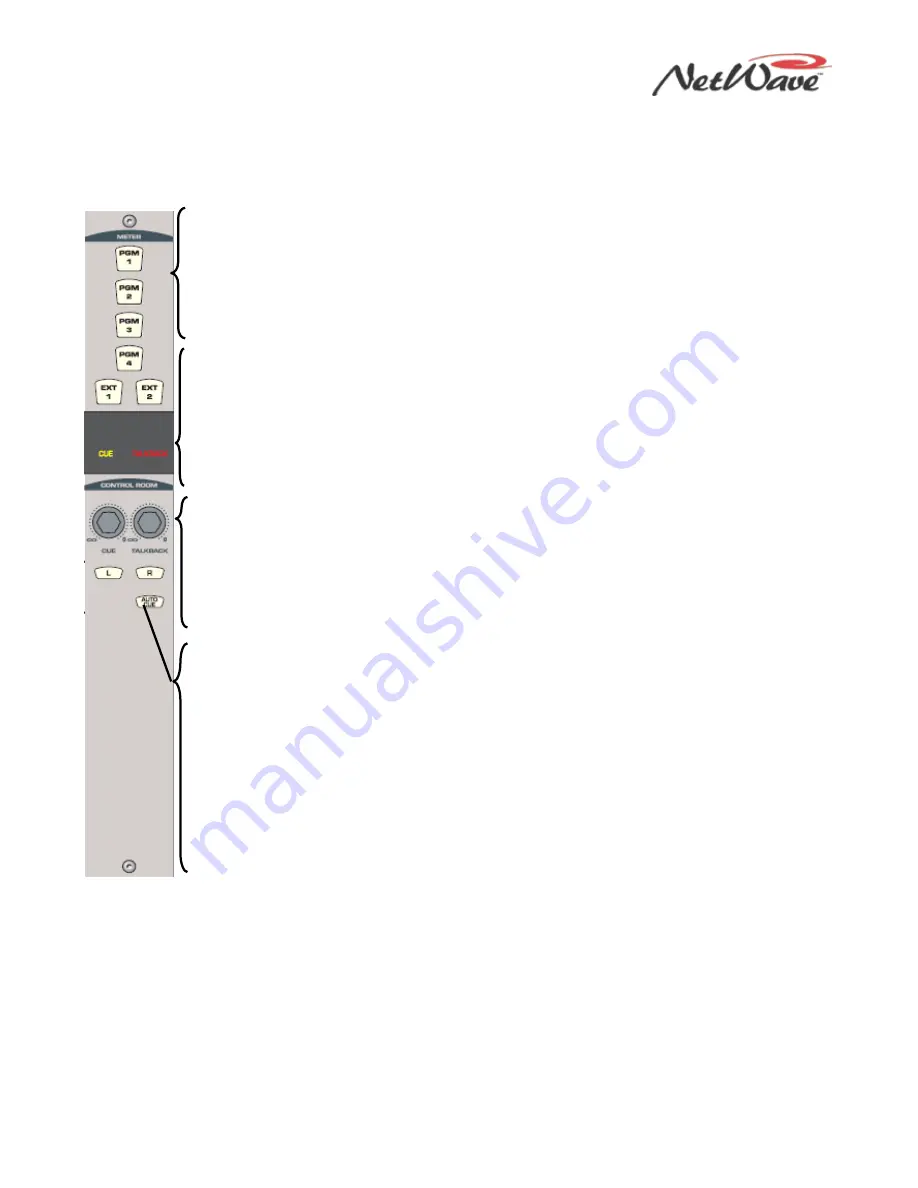
NetWave DirectView Broadcast Console Operations & Technical Manual
Revision A
3 - Operation
Harris Broadcast
3-7
PR&E
Figure 3-6. Left Column -
Monitor Control Panel
Monitor Control Panel – Left Column Controls
Figure 3-6 shows the left column controls on a Monitor Control Panel.
Meter
These buttons select which signal feeds the right-hand Aux meter:
PGM 1-4 — When lit, sends that Program bus to the Aux meter.
EXT 1, EXT 2 — When lit, assigns that External input to the Aux meter.
Only one button can be selected at a time.
Displays
CUE — When lit, indicates that cue is active on one or more channels and is being fed to the
cue speaker. CUE typically also overrides the Aux meter selection so the cue level can be
seen. (This feature can be disabled during console setup.)
TALKBACK — When lit, indicates the control room is receiving talkback from the studio. The
control room monitors dim by 12 dB while receiving talkback. Talkback goes to the operator
headphones and is switched to the cue speaker through the TALKBACK level control.
Level Controls
CUE — Adjusts the cue output level to the built-in mono cue speaker. This level does not
affect the routed stereo cue signal or the AutoCue signal in the operator’s headphones.
TALKBACK — Adjusts the level of talkback to the control room that is fed to the cue speaker.
When talkback is received, cue audio is cut off, and talkback is sent to the cue speaker
through this control.
Monitor Mode Selections
L and R — When both buttons are unlit, all monitor and headphone outputs are stereo. With
only L (left) lit, the left channel on the selected monitor source feeds both the left and right
monitor outputs. With only R (right) lit, the right channel on the selected monitor source
feeds both the left and right monitor outputs. With both L and R lit, the left and right outputs
are a mono sum of the left and right channels on the selected monitor source.
AUTOCUE — When unlit, cue does not affect the operator headphone output. When lit, and
cue is active, the operator headphone output switches to listen to the cue signal using one of
two modes: stereo cue, where cue replaces the monitor signal; or split cue, where cue is
summed to feed one ear while monitor is summed to feed the other ear. The mode is set
during console setup. Typically production rooms use stereo cue, while on-air studios use split
cue.
















































